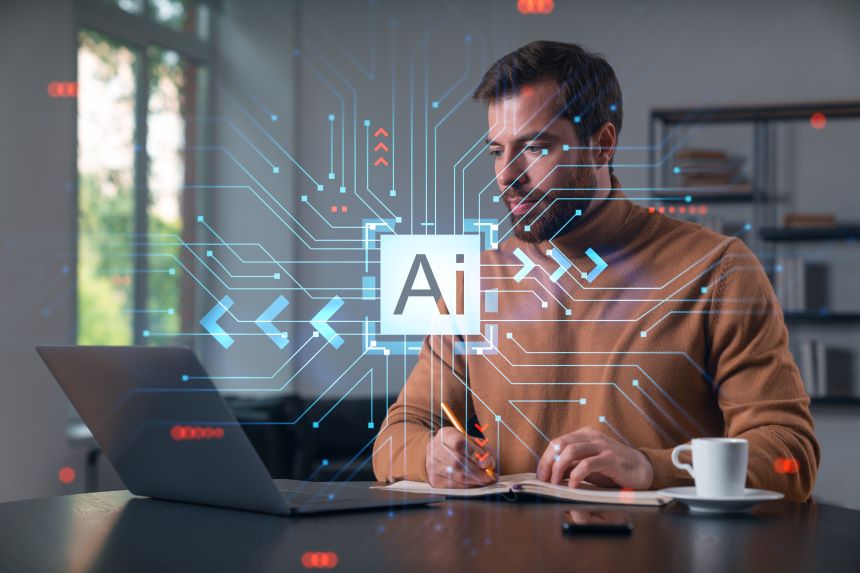
Work is changing – a pandemic, distributed workers, and the gig economy mean that employees are more remote than ever. This article outlines 8 training content development strategies for remote employee training in the changed workplace.
Why Should You Consider Remote Employee Training as a Key Component of Your Training Content Development Strategy?
Many companies have established solid training development strategies for their onsite employees. But for remote employees, the training is different. There’s no one-to-one conversion of live training originally intended for face-to-face training to training intended for remote employees. Everyone has the experience of being a remote employee – trying to engage and participate virtually in training sessions. It doesn’t quite deliver the value they seek!
With today’s distributed workforce, companies must adhere to a core set of training content development strategies that maximize remote employee training efforts. The following list of 8 strategies will help as you build your remote employee training content development strategy.
Strategy# 1: Training Needs Analysis (TNA)
A solid training needs analysis will enhance the effectiveness of your training solutions and save you time in the long run. Consider the following questions as you conduct your analysis:
- What are the key remote learner needs you must integrate into your training content development strategy?
- Are there unique challenges remote workers face?
- What is their technical aptitude?
- What tactics would best support your training content development strategy for remote employee training?
- How can you best incorporate digital solutions (VILT or blended or fully online mode) to optimize your training budget?
Strategy# 2: Selecting the most appropriate delivery modality
There are many options when determining the delivery modalities to use for your training content development strategy.
- Virtual synchronous: Face-to-face training is great. But for remote employee training, virtual synchronous provides that human interaction across geographic distances. For content that requires real-time interaction, facilitators can create environments that maintain participant engagement even without being in the same room.
- Virtual asynchronous: This allows remote employee training that’s done at each individual’s pace. It allows you to deliver remote employee training that people can go back to as often as they need for reference and remediation.
- Blended learning 2.0: Blending VILT with online training often proves to be the most effective modality. Identify content that lends itself for asynchronous learning and couple it with synchronous interactions.
- Fully online: Several trainings can be offered in the self-paced online mode.
Strategy# 3: Identifying the functions and features of available virtual delivery platforms
Each virtual synchronous delivery platform offers slightly different features. Depending on your needs, you may emphasize one over another. In general, look for a platform that:
- Is easy to use for both the facilitator and participants.
- Is compatible on various platforms, including mobile devices.
- Provides multiple channels of facilitator/participant interaction.
- Integrates video and audio.
Strategy# 4: Following-up – the key to great training
The goal of any training is to change behavior. That’s best accomplished when remote employee training includes follow-up assignments, like labs and practice. Anders Ericsson, the famous organizational psychologist, pioneered research that showed the mastery of any topic or task takes 10,000 hours. The more practice, the better, especially when it’s coupled with expert feedback.
Learning is a journey. Make sure your training content development strategy follows this pattern:
- Learning.
- Reinforcement.
- Reinforcement.
- Application and feedback.
Strategy# 5: Investing in development and delivery teams and scaling through outsourcing
Your training content development strategy won’t be effective without supporting the team responsible for its development and implementation. Make sure you help them see the vision of remote employee training with its unique needs and requirements. Opting for outsourcing as well as rapid and Agile development will help you accelerate your Virtual Training transformation.
Strategy# 6: Making the learning environment simulate the performance environment
If your training content delivery strategy includes online training already – try to create the environment so it simulates the application being taught as much as possible. This allows you to condition remote employees so they’re familiar with the actual application. To do this:
- Develop deep simulations. This is possible with tools like Adobe Captivate and Articulate Storyline.
- Use voice over and overlays to give instructions, hints, and feedback.
- Consider including the navigation elements within the course player, if your LMS allows it.
- Keep modules as granular as possible and use templates to create efficient maintenance cycles.
Strategy# 7: Aligning your training content development strategy for remote employees to your corporate strategy
Assessment analytics mean nothing unless they’re tied to the KPIs your company uses. Often, that data and analytics will already be accessible and will be something the C-Suite will understand. To do justice to this, don’t focus on L&D Metrics alone to evaluate the effectiveness of your training. Add the Business Metrics that will help you ascertain the impact of the training on business.
Strategy# 8: Don’t over-engineer your strategy
Remember, the simplest strategy is often the most effective. Less is always more, so don’t over-complicate your training content development strategy for remote employee training.
COVID-19 has reset many things, and the workplace of tomorrow needs training strategies that are Agile and can quickly be realigned to future changes. This article outlines 8 such strategies that can be used to keep pace with the ever-changing dynamics and offer effective training content for your remote employee training.



